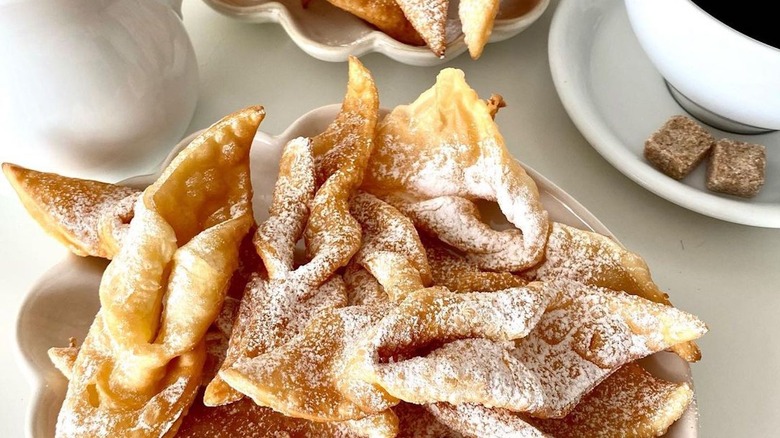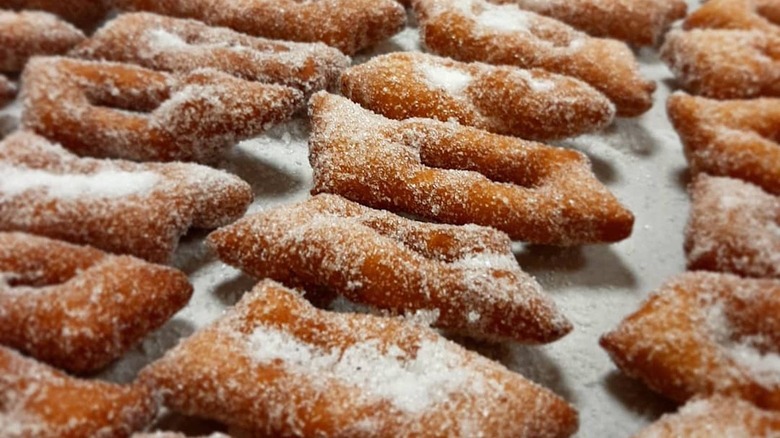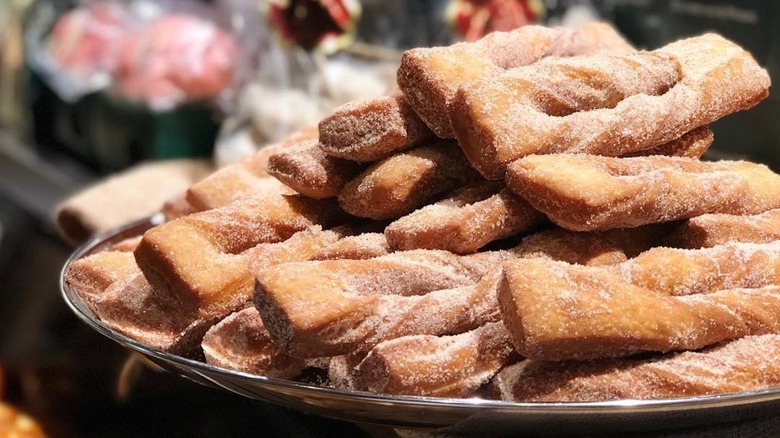Klenät Is A Deep-Fried Nordic Delight
Step into the vibrant world of Swedish cuisine, and you'll discover a scrumptious pastry known as klenät. With its unique shape, crispy bite, and mouthwatering flavors, klenät has earned a place in the hearts of food enthusiasts around the globe.
Klenät is a traditional Swedish Christmas cookie that is made from a dough consisting of flour, sugar, butter, eggs, cream, and brandy. The dough is rolled out and cut into various shapes, such as stars, hearts, or animals, then decorated with colorful icing, sprinkles, cinnamon, or confectioners' sugar to add a festive touch. Klenät is loved for its delicate crumb, which is achieved by using a high ratio of butter to flour in the dough. The cookies are baked until golden brown and slightly crispy on the edges. In Sweden, klenät is often served with a cup of coffee or tea. The word "klenät" is derived from the Swedish word klenod, meaning gem, which perfectly describes the pastry's delicate texture and perceived preciousness.
Klenät originated in Sweden
Klenät holds its roots deep in the culinary heritage of Sweden. These delightful treats have been a beloved part of Swedish cuisine for centuries, with a history that is believed to trace back to at least the 15th century. They were first crafted in the Swedish countryside, where locals ingeniously combined the basics — flour, eggs, sugar, and butter — to create a simple yet mouthwatering pastry.
Initially, klenät was prepared in observance of festive celebrations, such as weddings, Christmas, and Midsummer festivals. Over the centuries, various regional variations of klenät emerged, each with its own distinctive twist, such as adding flavored sugar coatings or spices. While the core ingredients have remained relatively unchanged, these regional adaptations have contributed to the rich diversity of klenät throughout Scandinavia. Today, klenät continues to be an integral part of the region's culinary scene, with both locals and visitors relishing these delicate pastries as a sweet reminder of Sweden's history.
Klenät calls for basic ingredients
Klenät, a traditional Swedish delicacy, boasts a unique blend of simple yet essential ingredients that contribute to its distinct flavor and texture. At its core, klenät is crafted from a batter that combines flour, eggs, milk, and a touch of sugar. The interplay of these ingredients is crucial in achieving the dessert's signature lightness and crispy exterior.
Flour serves as the foundation, and fresh eggs enrich the mixture with protein, aiding in binding and creating a tender bite. Milk not only contributes moisture but also adds a subtle richness, resulting in a harmonious balance of flavors. A dash of sugar gently sweetens the batter, enhancing the overall taste without overpowering it. The magic unfolds in the cooking process, as the dough is skillfully placed into hot oil, forming intricate lacy patterns as it fries.
In essence, klenät is a testament to the art of combining basic ingredients to create a treat that marries simplicity with refined taste. Its allure lies in the mastery of this blend, resulting in a dessert that captivates the palate and salutes the heritage of Swedish craftsmanship.
Klenät's traditional recipe requires patience and TLC
The long-established recipe for making klenät involves mixing flour, sugar, eggs, melted butter, salt, and vanilla to form a smooth, slightly thick dough. Some variations of the recipe include cardamom, a quintessential spice in Swedish baking, for a spark of warmth and complexity. The dough is then rolled out thinly and cut into various shapes using klenät cutters or a standard knife. The cut-out shapes are deep-fried until golden brown and crispy.
Once fried, klenät can be dusted with powdered sugar, which adds a pleasant sweetness and an elegant aesthetic. Some variations also include filling the pastries with jam or cream, further enhancing their already lovely taste and presentation. While the recipe for klenät is relatively straightforward, it often necessitates plenty of practice and precision. Klenät are best enjoyed fresh, with their delicate finish and irresistible taste making them a favorite dessert during festive occasions or as an everyday snack.
Klenät plays a key role in Swedish culture
Klenät holds a significant place in Swedish culture, not just as an iconic pastry but also as a symbol of togetherness. One of the main occasions where klenät shines is during the Christmas season. In Sweden, the weeks leading up to Christmas are filled with the soul-filling aroma of klenät being freshly prepared in households across the country. They are a staple at Christmas parties, gatherings, and fika (a Swedish coffee break) during this time of the year. Sharing klenät with family and friends enhances the sense of community and joy that comes with the holiday season.
Klenät is also associated with Midsummer, a renowned Swedish celebration that aligns with the solstice. During the longest day of the year, klenät is paired with other dishes, such as pickled herring and strawberries. It brings a sense of nostalgia and connection to the nation's enduring heritage during this important folk event.
Beyond holidays, klenät is also eaten during gatherings, birthdays, and family reunions, creating lasting memories and a sense of comfort and belonging. As a cherished part of Swedish culinary heritage, klenät plays a role in passing down traditions from one generation to another, keeping Swedish customs alive and thriving. Whether for a special occasion or everyday fika, klenät remains a symbol of warmth, love, and shared moments.




